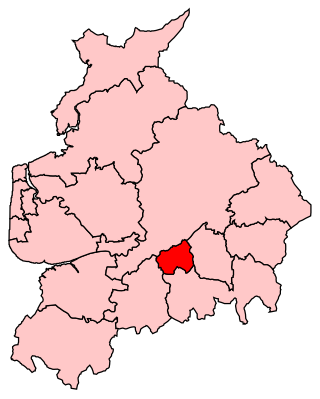
Blackburn is a constituency in Lancashire, England, which has been represented in the House of Commons of the UK Parliament since 2015 by Kate Hollern of the Labour Party. From 1979 to 2015, it was represented by Jack Straw who served under the Labour leaders of Neil Kinnock and John Smith and the Labour governments of Tony Blair and Gordon Brown.
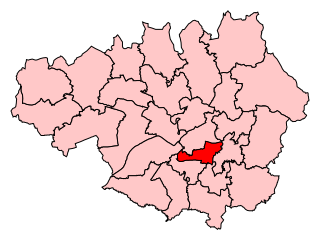
Manchester Gorton is a constituency represented in the House of Commons of the UK Parliament by Labour's Afzal Khan, who was elected at the 2017 general election. It is the safest Labour seat in Greater Manchester by numerical majority and one of the safest in the country.

North Essex was a parliamentary constituency represented in the House of Commons of the Parliament of the United Kingdom between 1997 and 2010. It elected one Member of Parliament (MP) by the first past the post system of election.
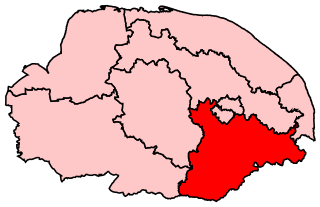
South Norfolk is a constituency represented in the House of Commons of the UK Parliament since 2001 by Richard Bacon, a Conservative.
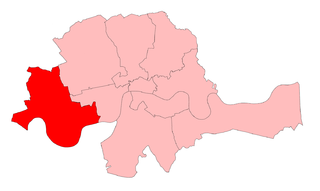
Chelsea was a borough constituency, represented in the House of Commons of the Parliament of the United Kingdom.
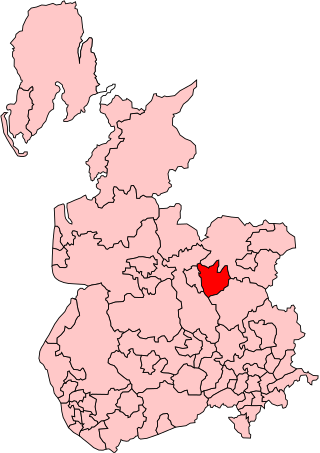
Accrington was a parliamentary constituency of the House of Commons of the Parliament of the United Kingdom from 1885 to 1983. It elected one Member of Parliament (MP) by the first-past-the-post system of election.
West Essex, formally known as the West Division of Essex was a parliamentary constituency in the English county of Essex. From 1868 to 1885, it returned two Members of Parliament (MPs) to the House of Commons of the Parliament of the United Kingdom, using the bloc vote system of election.

North Cheshire is a former United Kingdom parliamentary constituency. It was created upon the division of Cheshire in 1832. In 1868 it was abolished with South Cheshire to form East Cheshire, Mid Cheshire, West Cheshire and Stalybridge.
East Cheshire was a parliamentary constituency which returned two Members of Parliament (MPs) to the House of Commons of the Parliament of the United Kingdom. Elections were held using the bloc vote system.
Hackney was a two-seat constituency in the House of Commons of the UK Parliament created under the Representation of the People Act, 1867 from the former northern parishes of the Tower Hamlets constituency and abolished under the Redistribution of Seats Act, 1885.
Westhoughton was a parliamentary constituency in Lancashire, England. Centred on the former mining and cotton town of Westhoughton, it returned one Member of Parliament (MP) to the House of Commons of the Parliament of the United Kingdom.

North Lancashire was a county constituency of the House of Commons of the Parliament of the United Kingdom. It was represented by two Members of Parliament. The constituency was created by the Great Reform Act of 1832 by the splitting of Lancashire constituency into Northern and Southern divisions.
South East Lancashire was a county constituency of the House of Commons of the Parliament of the United Kingdom. It was represented by two Members of Parliament. The constituency was created by the Reform act of 1867 by the splitting of the South Lancashire constituency into South-West and South-East divisions.
Manchester was a Parliamentary borough constituency in the county of Lancashire which was represented in the House of Commons of the Parliament of the United Kingdom. Its territory consisted of the city of Manchester.
Heywood was a county constituency in the county of Lancashire of the House of Commons for the Parliament of the United Kingdom which existed between 1885 and 1918. Created by the Redistribution of Seats Act 1885, it was represented by one Member of Parliament. The constituency was abolished in 1918.
Middleton was a county constituency in the county of Lancashire of the House of Commons for the Parliament of the United Kingdom. Created by the Redistribution of Seats Act 1885, it was represented by one Member of Parliament. The constituency was abolished in 1918.

South Devon, formerly known as the Southern Division of Devon, was a parliamentary constituency in the county of Devon in England. From 1832 to 1885 it returned two Knights of the Shire to the House of Commons of the Parliament of the United Kingdom, elected by the bloc vote system.
EastEssex, formally known as the East Division of Essex was a parliamentary constituency in the English county of Essex. From 1868 to 1885, it returned two Members of Parliament (MPs) to the House of Commons of the Parliament of the United Kingdom, using the bloc vote system of election.
The ceremonial county of Cheshire, which comprises the unitary authorities of Cheshire East, Cheshire West and Chester, Halton and Warrington, has returned 11 MPs to the UK Parliament since 1997.






